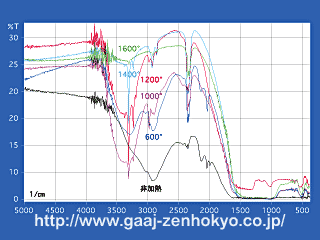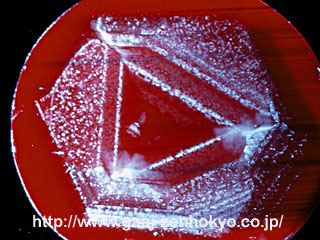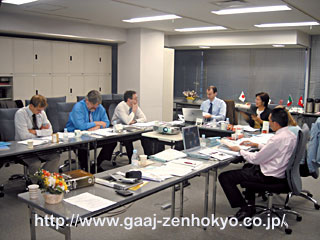| ♦Accuracy of Identification of Heating / Non-heating process In accordance with the revision of regulation on the expression on gem identification reports last September, AGL (Association of Gemmological Laboratories Japan) started to make individual description about heat treatment on corundum. This new regulation resulted in giving further task to laboratories of AGL members, because only a comment gcorundum is generally enhancedh used to be described in a remark section on a gem identification report and corundum was not tested individually to detect heating / non-heating status. To identify heat treated corundum, detailed observation of internal features is very important. As many crystal inclusions have lower melting point than the host mineral of corundum, they may melt or deform by heating process. Liquid inclusions may be healed, and some substances such as flux that is needed for heating process may be observed as residues. Spectra in UV-visible and infrared regions will show differences after heating. Blue sapphire that was heated in reducing atmosphere shows absorption originates in OH banding after heating, which was not detected before heat treatment (fig 1). Laser tomography can sensitively detect the development of dislocation and alteration of fluorescence colour due to heating, and this becomes a very effective technique to determine heating / non-heating status.
In recent years, rubies from Mong Hsu region in Myanmar have been heat treated under relatively low temperature (it is difficult to estimate the actual temperature, but it is assumed under 1,000ºC) and the process, called glow temperatureh heat treatment, is giving gem industry a problem. Concurrently with the problem arisen, a large amount of rubies from Myanmar with identification reports issued by a laboratory overseas stating that the stones showed gno indication of heatingh was brought into Japanese market. Rubies from Mong Hsu region contain blue colour zoning in the centre and this was traditionally thought as a proof of non-heating (photo 8, left). However, although general colour hue of a stone can practically be improved by heating process under low temperature (under 1,000ºC), this blue sector is proved not to disappear by heat treatment. GGL was rapid to find the effectiveness of infrared spectral analysis (FTIR) for detection of low temperature heating, and the lab introduced the instrument to the routine work. Succeeding research by Research Laboratory of GAAJ proved that identification of Mong Hsu ruby that had been heated over 500`600ºC became possible by infrared spectral analysis (FTIR). Furthermore observation by laser tomography may possibly detect low temperature heat treatment at temperature close to or even under the detection limit (photo 8, right). Currently we are supplied with pink sapphires from Madagascar by GGL and studying to establish more sensitive identification technique by analysing stones before and after the heat treatment using instruments and know-how of both labs. Laboratory Manual Harmonization Committee (LMHC) are now working on adjustment of terms used by laboratories worldwide, and are also trying to prevent labs from reaching different identification results by setting guidelines for detection of heating / non-heating process on corundum. With the purpose of determination of origin or identification of heat treatment of a gemstone, mutual exchange of technical collaborative research and information among international gemmological laboratories becomes more essential, and effort to give scientific proof and credibility to the industry and to customers are inevitable.
*1: IGC is an international conference aiming at progress of gemmology and interchange among researchers, and is currently consisting of noted mineralogists and gemmologists from 33 countries over the world. GAAJ has been actively attending the conference and continuously supporting it. *2: LMHC is consisting of the following seven laboratories: AGTA-Gem Testing Centre (USA), CISGEM (Italy), GAAJ (Gemmological Association of All Japan) Laboratory (Japan), GIA-Gem Trade Laboratory (USA), GIT-Gem Testing Laboratory (Thailand), Gübelin Gem Lab (Switzerland) and SSEF Swiss Gemmological Institute (Switzerland). |
||||||||||||||||||||||||||||||
|
||||||||||||||||||||||||||||||







